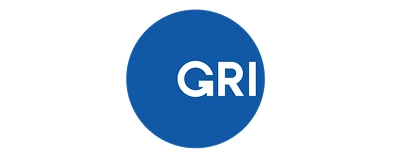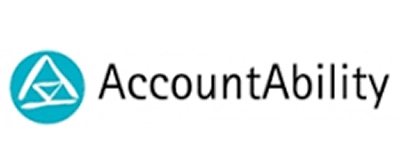
Materiality Assessment
Process for Materiality Assessment
The company has formulated a strategy to drive its business by creating a business ecosystem that supports a 360-degree lifestyle for all groups. This aims to build “The Place Making for Sustainable Future” — a space that fosters long-term sustainability for everyone. It responds to the needs and expectations of stakeholders and promotes a better society and environment. The company integrates the principles of ESG (Environmental, Social, and Governance) across environmental, social, economic, and corporate governance dimensions throughout its value chain, aligning with its sustainability-driven business approach.
Understand and Identify Sustainability Issues
-
Analyze the Company’s sustainability and business context in alignment with: (1) corporate strategy development context, (2) enterprise risk factors, and (3) organizational management systems.
-
Assess value chain activities across the Company’s business ecosystem, and analyze the interconnection between the value chain and Central Pattana’s key stakeholders—customers, tenants, business partners, employees, communities, government agencies, creditors, and shareholders.
-
Identify material topics using both top-down and bottom-up approaches. The top-down process draws from corporate strategy formulation, while the bottom-up process incorporates stakeholder input and engagement. This process is reviewed annually as part of the Company’s strategic and risk assessment cycles.
-
Expand the material topic list to include emerging global sustainability trends relevant to the real estate and related industries, with references to the following international frameworks:





Analyze, Assess, and Prioritize Impacts
-
Assess material topics using the Double Materiality approach, considering Impacts, Risks, and Opportunities (IRO). This methodology not only identifies impacts on stakeholders but also captures potential risks and opportunities that affect the Company—aligned with international standards such as IFRS S1/S2 and CSRD. The results are integrated into corporate strategy, sustainability action plans, and enterprise risk management.
-
Evaluate sustainability impacts based on positive and negative effects that have occurred or may occur for key stakeholders (Impact Materiality), using both in-depth data analysis and insights gathered from key stakeholder engagement channels such as materiality surveys, focus group discussions, and interviews.
-
Negative Impacts are assessed based on severity, which includes:
- Scale of impact
- Scope of impact
- Irremediability of the impact
-
Positive Impacts are assessed by analyzing:
- Scale
- Scope
- Likelihood of the positive outcome for stakeholders, society, and the environment
-
-
Identify material topics related to risks and opportunities that could affect the Company’s enterprise value (Financial Materiality)—both current and future—by evaluating financial performance, operations, and enterprise risks. The assessment is aligned with COSO Enterprise Risk Management 2017 (COSO ERM 2017), UN Guiding Principles on Business and Human Rights, International human rights standards. This process is integrated into the Company’s risk management framework.
-
Evaluate financial impacts across short-, medium-, and long-term horizons—covering costs, expenses, and revenues
-
Assess impact on enterprise value in terms of competitiveness, reputation, operational efficiency, and workforce capability
-
Measure likelihood of the impact occurring
-
Adopt the Business for Societal Impact (B4SI) framework to measure and report social impact, integrated with internal assessment methodologies
-
Criteria for Assessing Material Impacts, Risks and Opportunities (IROs)
| Criteria | Very Low | Low | Medium | High | Very High |
|---|---|---|---|---|---|
| Impact materiality | |||||
| Scale of impact | Short-term (1 year) | Medium-term (2-5 years) | Long-term (5+ years) | ||
| Scope of impact | |||||
| Environmental | < 1% of total | > 75% of total | |||
| Social | Individual affected | all stakeholder groups affected | |||
| Likelihood / Irremediability |
Rare / Unlikely Impacts can be remediated within 1 month | Almost Certain / Easily Occurs Impacts require more than 5 years to remediate | |||
| Financial materiality | |||||
| Financial effects | < 3% of revenue | > 3% | |||
| Short-term (1 year) | Medium-term (2-5 years) | Long-term (5+ year) | |||
| Scale of impact on Company's enterprise value including competitivenness, reputation operatons and the workforce | Impacting one aspect | Impacting multiple aspects | Impacting all aspects | ||
| Likelihood of occurrence | < 50% | > 50% | |||
-
Evaluate and prioritize sustainability issues most material to the Company to inform the development of the sustainability strategy and overall corporate strategy using the double materiality approach. This process is guided by the following frameworks and standards:
-
Global Reporting Initiative (GRI) Standards 2021.
-
Task Force on Climate-related Financial Disclosures (TCFD)
-
International Financial Reporting Standards (IFRS) developed by the International Sustainability Standards Board (ISSB) and the International Accounting Standards Board (IASB)
-
Corporate Sustainability Reporting Directive (CSRD), along with the European Public Real Estate Association (EPRA) Sustainability Best Practice Recommendations (sBPR) guidelines, aligned with the European Sustainability Reporting Standards (ESRS)
-
Other relevant sustainability standards and metrics
-
-
Based on the prioritized sustainability issues, formulate the corporate strategy, risk management plans, and sustainability strategy while also establishing corresponding short-, medium- and long-term sustainability key performance indicators (KPIs) that align with the Company’s objectives and overarching performance metrics. Progress is tracked through systematic review processes for each plan. These sustainability KPIs are also integrated into performance evaluations and compensation decisions including salaries, bonuses and other benefits for the CEO, senior executives and employees at all levels, according to their roles and responsibilities.
Validation, Disclosure, and Assurance
-
The identified material topics undergo cross-functional validation by the Disclosure Taskforce before seeking endorsement from the Corporate Governance and Sustainability Development Committee, the Risk Management Committee, and the Executive Management Committee.
The finalized topics are disclosed in accordance with the GRI reporting framework and the Annual Information Disclosure / One Report (Form 56-1 One Report) on the Company’s website. In 2024, selected disclosures also follow IFRS guidelines.
-
The Company’s stakeholder engagement and materiality assessment process has been independently reviewed and assured by an external organization with expertise in sustainability assessment, following the AA1000 Assurance Standard (AA1000AS v3), as disclosed on the Company’s website.
The outcome of the materiality assessment process serves as a foundation for the Company’s corporate strategy, sustainability plans, and risk management framework. The results are directly linked to Central Pattana’s three sustainability pillars: Better People, Better Planet, and Strong Governance, ensuring a focused and tangible response to the most critical topics.
In 2024, six topics were classified as key material topics and linked to eight Key Sustainability KPIs that are embedded into management performance evaluations. The Company has established continuous monitoring mechanisms, overseen by the Corporate Governance and Sustainability Development Committee, which regularly reviews progress and provides recommendations to ensure that sustainability performance is effective and capable of driving long-term enterprise value.
Material Topics for 2024
The Company reviewed and updated its material topics for 2024 based on the results of the materiality assessment process. This included a revalidation of previously identified topics and the inclusion of additional sub-topics to better reflect stakeholder expectations. The environmental topics were reorganized to improve clarity—resource and environmental management was reclassified into three distinct areas: energy, water, and biodiversity. In parallel, topics related to waste, pollution, and emissions were consolidated under the newly introduced topic of the circular economy.
As a result, the Company identified 13 material topics for 2024. Of these, 6 topics have been classified as key material topics, each of which has been translated into 6 organizational KPIs, as presented in the “2024 Materiality Prioritization Results” table and discussed further in the section Driving Key Material Topics.

